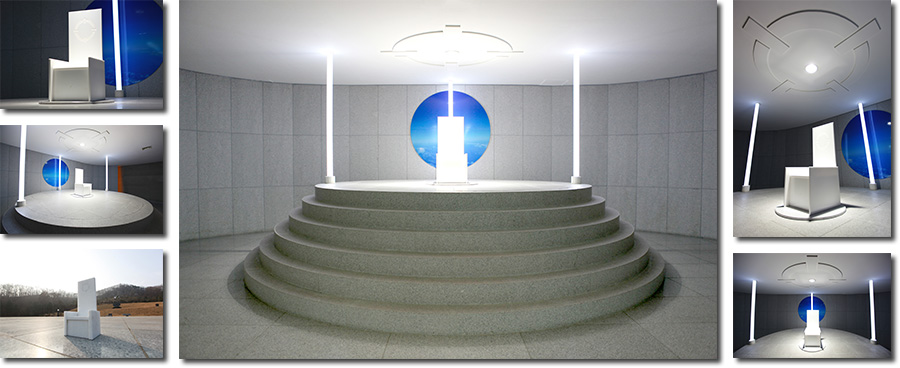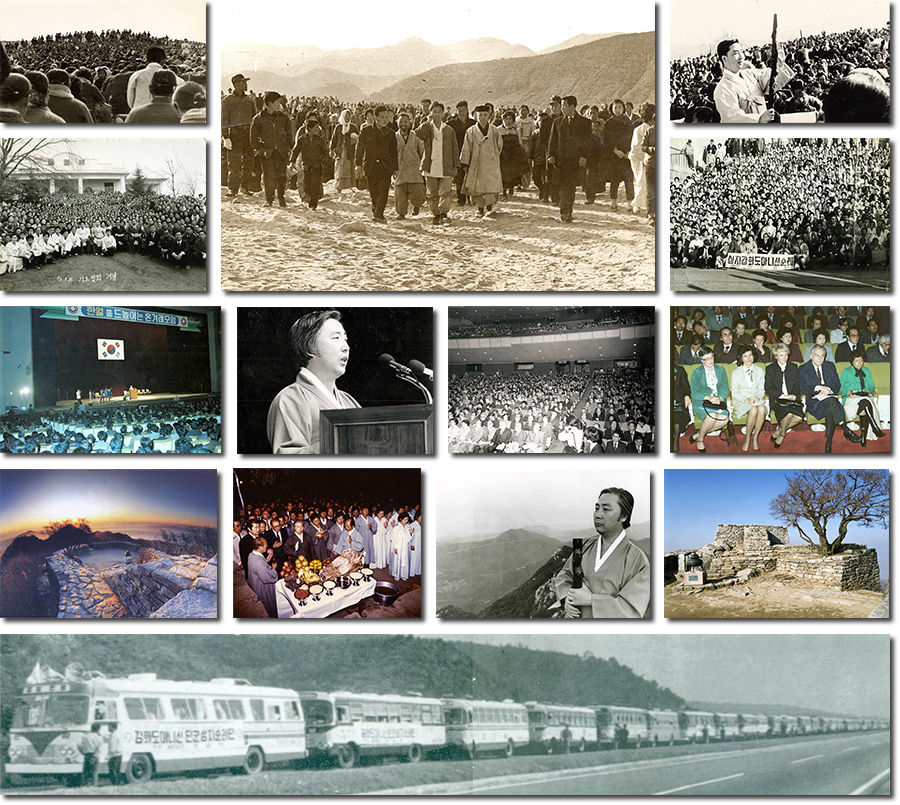HANOL

HANOL-GYO (HANOLGYO) is a Korean religion based on the traditional teachings of 'Spiritual Enlightenment and Awakening’ founded by Shin Jeong Yil (HANIM).
HANOLGYO is the religious re-establishment of the national founding philosophy of Korea, first initiated by the awakened being Dangun,who established the Old Korean Empire Gojoseon (Gochosun).
The progenitor of HANOL-GYO, Dangun (the Founding Father of Korea), initiated ‘the principles of HANOL Spirit (the sacred teachings on Enlightenment and Awakening to its people), introducing a possibility of spiritual transcendence: the evolution of human consciousness from the Ego-state to the Transcendental-state. It laid the spiritual foundation for the old Korean empire Gojoseon.
After 5000 years of preservation of the Hanol Spirit, the sacred teachings of the transcendental philosophy, ‘the principle of HANOL Spirit’, were consolidated into a religious foundation by another awakened being, Shin Jeong Yil, the founder of HANOL-GYO.
Dangun's famous dictum, well-known as the founding principle of the of Korea, preserved and practiced by HANOL-GYO, is to "Unite and Benefit All in Existence- 홍익인간 Hongick Ingan”.
HANOL-GYO is a unique and unconventional religion as it honors and respects all other enlightened beings, their teachings and their religions. It is concerned with how to believe rather than what to believe: it provides the 'teachings on belief' rather than a belief system. Thus, it allows the participants of HANOL-GYO to practice other religions as well.
HANOL-GYO honors all enlightened beings (Dangun, Buddha, Jesus, Lao-tzu, Confucius, etc) as teachers of enlightenment and awakening, and respects other religions as the pursuit of Universal Truth in different ways. Hence, it is completely acceptable to participate in HANOL-GYO while simultaneously practicing another religion.
HANOL-GYO's aims are to understand and practice Universal Truth through HANOL Principles, and to overcome all forms of segregations (e.g. Religion, Race, Ideologies and so on).
The philosophy of the HANOL Spirit can be summarized in the Founder HANIM's Doctrine.
"NA OL is HAN OL"meaning “My spiritual essence is the spiritual essence of HAN"
HAN is a profound word symbolizing Infinity & Totality, Universal Truth, Source of Existence, Nature of Omniverse.
The native name for Korea is HANKOOK, meaning the Nation of HAN.
HANOL-GYO provides teachings on Spiritual Transcendence: Enlightenment and Awakening.
It helps to find one's true nature "NA-OL" which is one with "HAN-OL(the nature of Totality)", and fulfill one's true nature by practicing love, wisdom and devotion: the will of Absolute Benevolence.
HANOL-GYO provides practical ways to transforming from an Ego-consciousness to Divine consciousnessㅡtranscending the Egoic state of mind and to awaken ourselves in order to recover NA-OL (our true nature and the original state of consciousness of being with infinite potential) by breaking free from the direct control of the Egoic mind and transcending the confines of tamed mind structure.
In the churches and temples of HANOL-GYO, there are no symbols or figures of worship.
Instead there is an Empty Chair which symbolizes the formless spirit and silent nature of HANOL.
It also symbolizes our true essence beyond our physical form of self and mental form of ego:
The Empty chair is the reflection of NA-OL, which is ultimately one with the true nature of all existence, HAN-OL.
Terminology
OL means spirit, soul, and essence.
It is the formless entity beyond our form: the original state of being, the pure consciousness, our true nature. It is the sacred inner dwelling soul of Atman which is one with Brahman, it is the Christ consciousness within which is one with the Holy Spirit, it is the Buddha nature within which is one with the Buddha nature of all that existㅡ NA-OL which is one with HAN-OL.
HAN-OL means One and Infinite Totality: the true parent of all creations, the immutable essence of ever-changing forms, the formless origin of all existence of forms, the mutual co-existence of form and formlessness, the field of infinite possibility and the source of all actualization, the Omnipotent and the Omniscient nature of the Omniverse.
"NAOL is one with HANOL" means "NAOL is the presence of HANOL."
All universal existence is the manifestation of the Omnipotent and the Omniscient in process at eternity, which is Now.
Thus, we are the living reality and presence of divine creation who can attain the true divine nature if we extricate ourselves from the egoic consciousness, from the tamed mind structure which is the quagmire of Karma.
It is to awaken from the "delusion of fear and obsession" which is the root of all forms of suffering(the root of Ego), and recognize our origin, our purpose, and our true will.
The HANOL Principle presents the ways in which one can recover the original state of consciousness untamed by Ego and realize the great potential of NAOL by undoing the illusion of time.
It is to recognize "the Eternal Nature of Time", the NOWㅡonly time with No beginning and No end.
It is to recognize one's True Nature as a Divine Reality at present and practice your Free-will NOW.
History of HANOL-GYO
Shin Jeong Yil, HANIM, achieved spiritual transcendence, the Awakening in 1965, and spread the teachings on HANOL.
He re-established the HANOL Religion, which was on the verge of distortion and extinction after 5,000 years of historical turbulence.
The conversion of 800,000 people into the HANOL spiritual movement laid a foundation for the creation of the HANOL Spiritual Foundation which was approved by the Korean Government as a legitimate religion in 1967.
The governmental recognition of HANOL-GYO led to the widespread establishment of its branches throughout the country and the followers of the HANOL-GYO reached 2million members at its peak.
According to the 『Encyclopedia of Korean Culture』, there were 2 million followers during its heyday. Another survey of the 『Current status of religious groups』 published by the Ministry of Culture and Public Information shows that there were 520,000 followers in 1982, and approximately 410,000 followers in 1997, with 186 branches located throughout the country including the main temples in the major cities of Seoul, Busan and Daegu.
In 1970, the head temple of HANOL-GYO was built at the heart of the National Sanctuary Mani Mountain where it is considered to be the origin of the Old Korean Empire and the Korean race. HANOL-GYO began an annual pilgrimage to the Cham-seong-dan(Holy altar) at the top of Mani Mountain, the sacred Ziggurat preserved for 5,000 years, where Dangun prayed for the peace of mankind since the beginning of the nation.
HANOL-GYO directly inherited the HANOL-Spirit and re-established its 5,000 years of tradition initiated by the progenitor DANGUN.
In 1998, Shin Jeong Yil finalized the elaboration of the Transcendental philosophy of HANOL principle and published the HANOL Scriptures, the sacred compilation of 36 books containing the profound teachings on the Universal Truth and its applications on philosophy, epistemology, metaphysics, science, economics, politics, society, nature, culture and religion.
In 1999, Shin Jeong Yil passed away and returned to the formless dimension, the eternal home of all creation. After HANIM entered into Nirvana, unprecedented number of holy crystals of sari (sacred matter found among the cremated remains of enlightened monks and Buddha) were recovered. Respectable celebrities including the spiritual leaders of other religions paid a visit to witness the sari. Since then, Hanol-gyo has been exhibiting the sari at the Commemoration Ceremonies of the Founder.
During the Post-founding era, HANOLGYO Foundation has undergone a major transitional process. Faced with the Korean IMF financial crisis, the legal descendant Sewon Shin, (a former artist, well-known as a genius young painter, until he gave up his art and majored in politics, philosophy and economics at Oxford University) restructured the HANOL-GYO Foundation.
After Sewon Shin assumed the leadership, he mainly focused on elaborating the founder's teachings on HANOL Principles and refrained from applying the traditional concepts of ritual and worship.
HANOL-GYO has transformed into a more flexible, liberal and decentralized organization under his leadership.
In accordance with the founder’s last will on religious unification, Sewon Shin officially made religious conversion unnecessary and constitutionalized the allowance of religious multiplicity. On the consensus with the Board of HANOLGYO, he prescribed in the HANOL constitution that the adherents of HANOL-GYO could participate in other religions as they wish and vice versa.
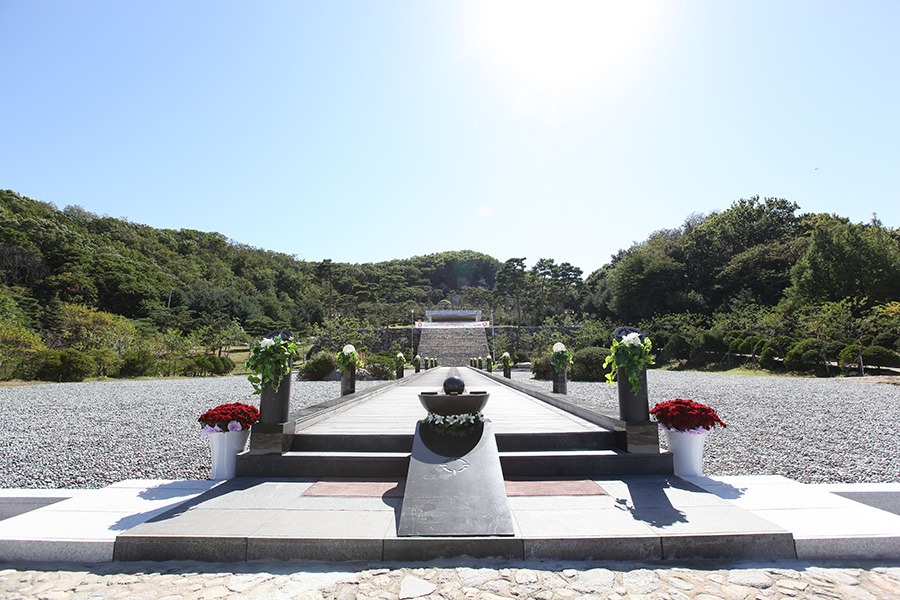
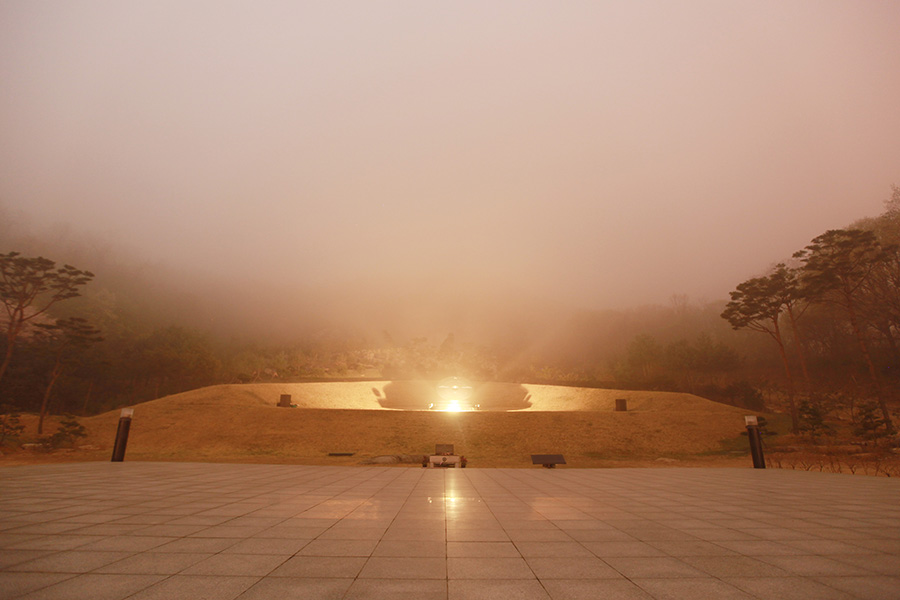
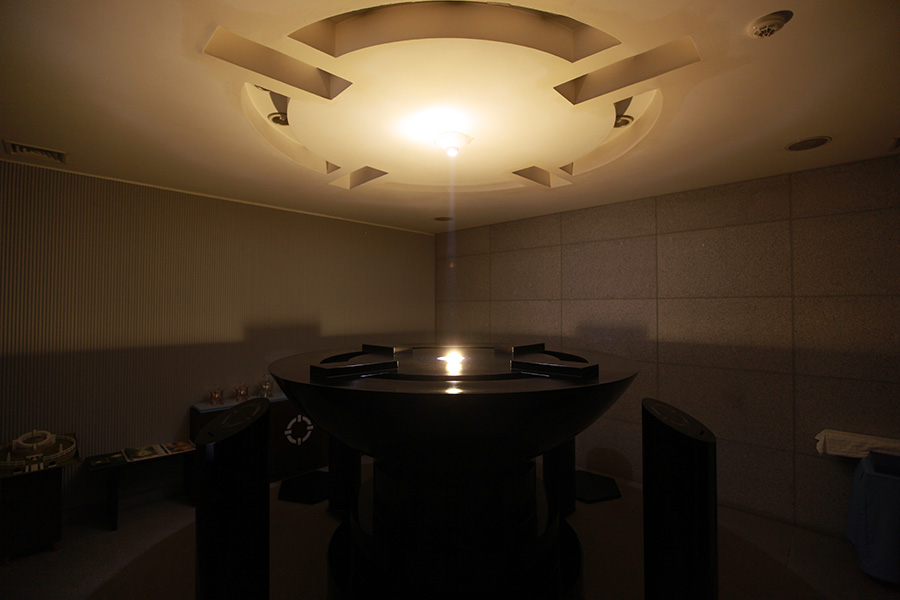
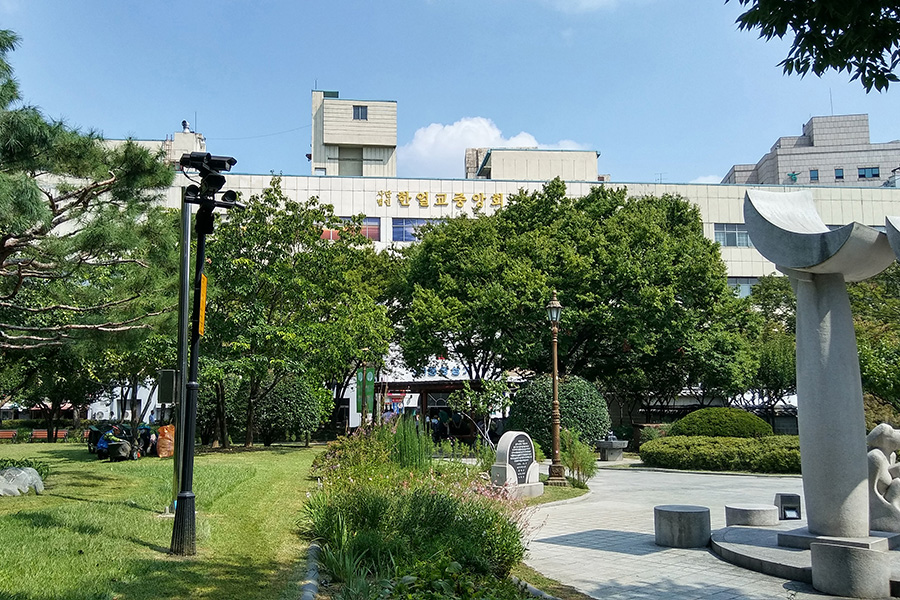
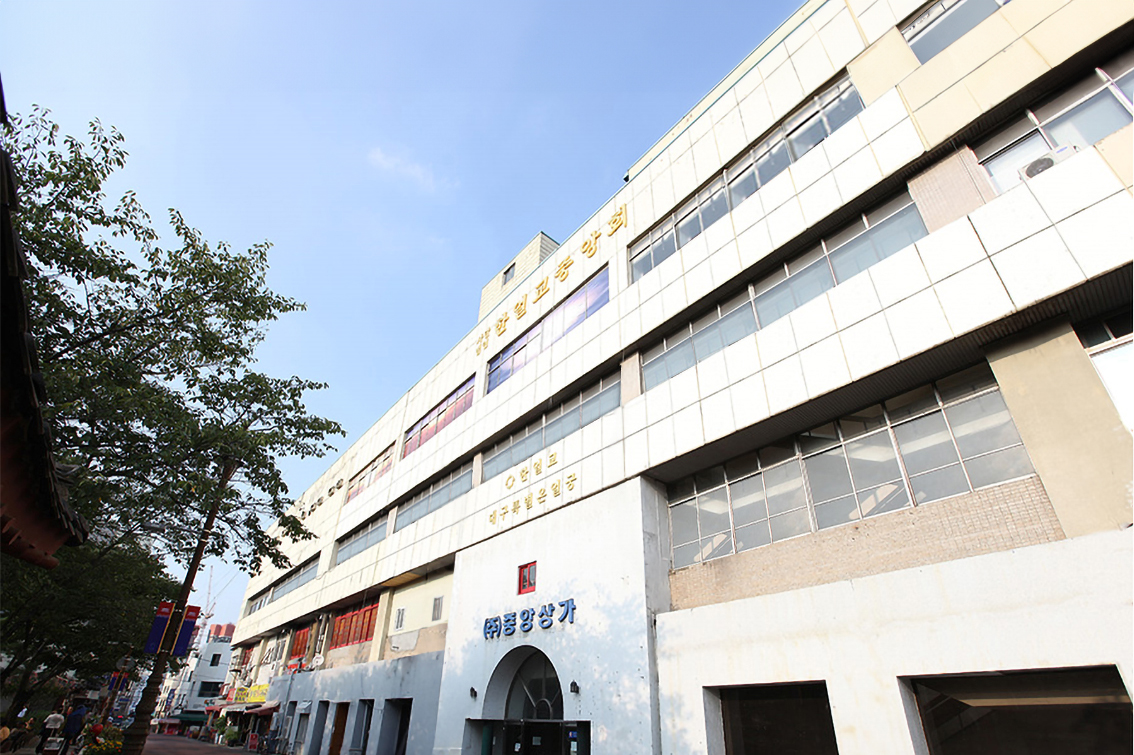
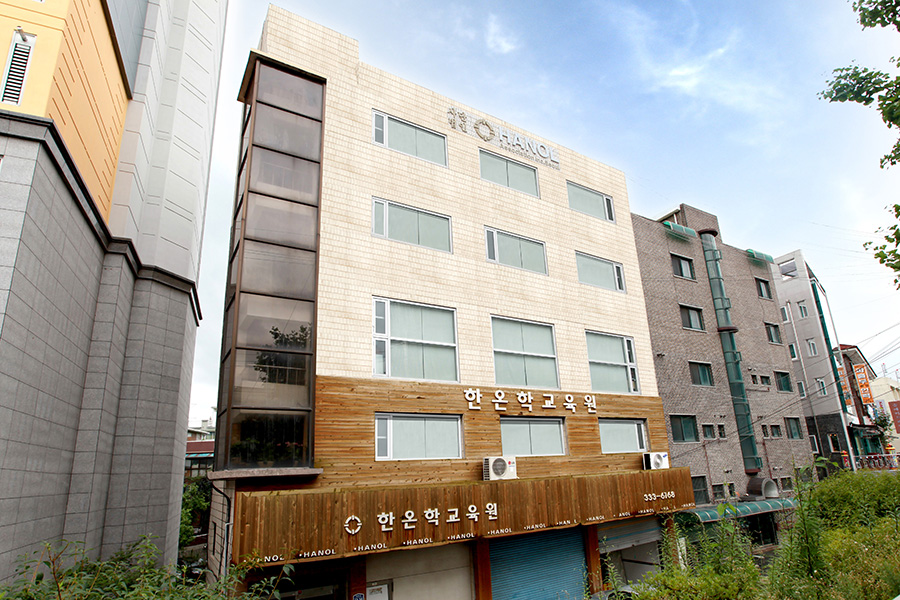
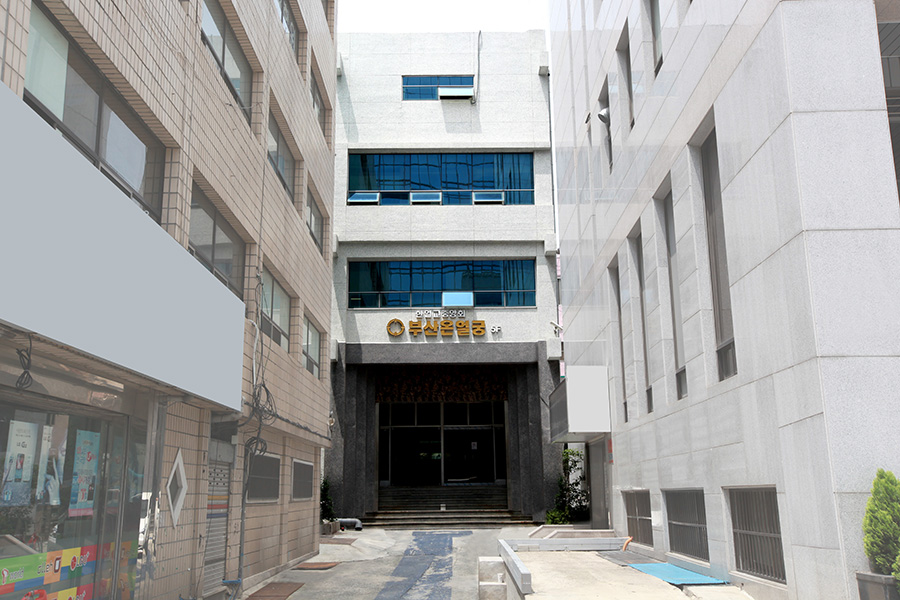
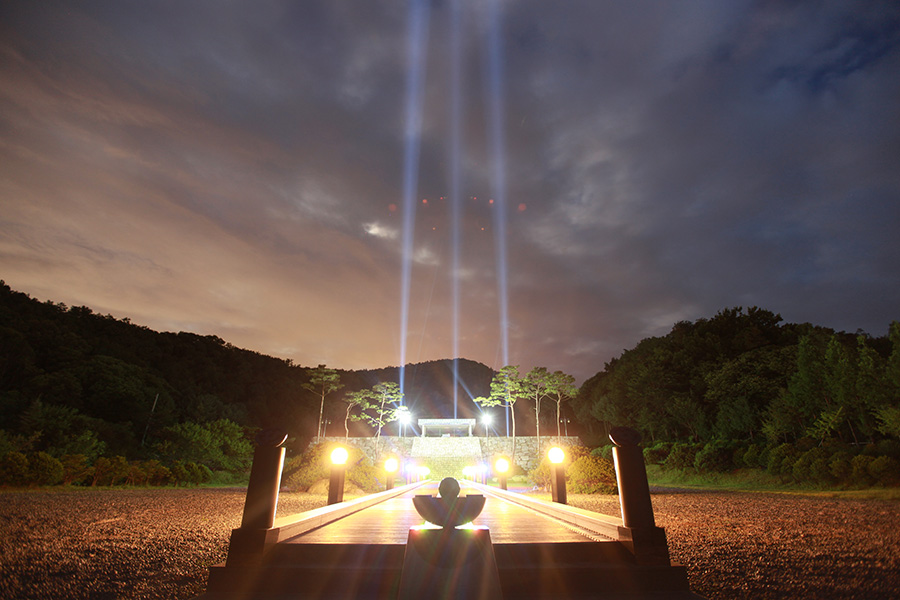
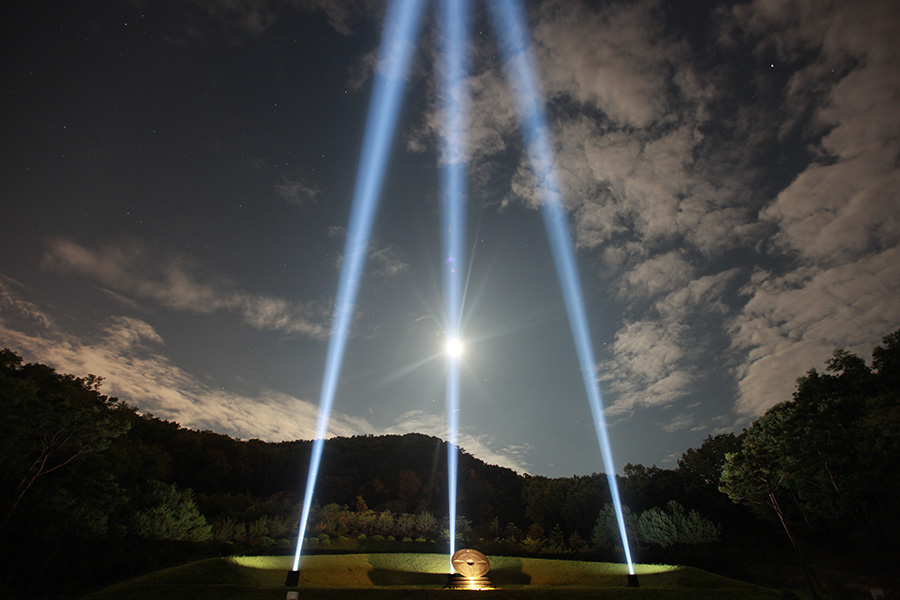
Furthermore, he integrated art into spiritual teachings by expressing the quintessence of the Hanol principle, which is the "Self-Liberation of Consciousness", in art form: the so-called "Art of Enlightenment and Awakening".
He officialized that the symbolic function of the regional chapels of HANOL could be replaced by the "Art and Architecture of Enlightenment" in the future. Furthermore, the revised constitution permitted that particular traditional ceremonies and the formality of rituals could be substituted by a simple contemplation on the Enlightenment Art or meditation on self-awareness.
He stated that "illuminating the lights of Enlightenment Art can represent the quintessence of the Hanol Principle better than a thousand books about its analysis", and that "the uncontaminated pure lights of Enlightening Art can more accurately speak for the Hanol Spirit" than a thousand words he could use to explain it.
After stabilizing HANOL-GYO, Sewon Shin resigned and returned to work as an artist introducing a new form of art called Transart.
Under the collective leadership of the Board of HANOL-GYO, the main temple of HANOL at Kanghwa Mani Mountain was reconstructed in celebration of the 50th anniversary of HANOL-GYO's re-establishment and governmental recognition that was received half a century ago.
The founder HANIM's holy crystals of Sari and the engraved plates of the Hanol scriptures were exhibited at the founder’s commemoration ceremony of the 50th anniversary.
After the 50th anniversary, HANOL-GYO officially agreed upon initiating so-called “Hanol innovation: a new form of Spiritual movement which is the integration of art and spirituality” at the general assembly, and endorsed Hanol Spiritual & Cultural Movement of Art.
HANOL-GYO introduced a new perspective in religious innovation and spiritual evolution.
HANOL-GYO has undergone significant development. Yet the spirit of its founder, the core of its founding principles, and the revolutionary insight of the successor continue to shine through these transformations.





